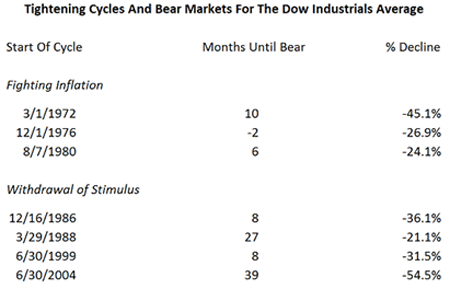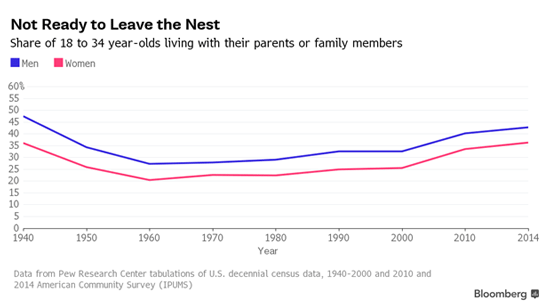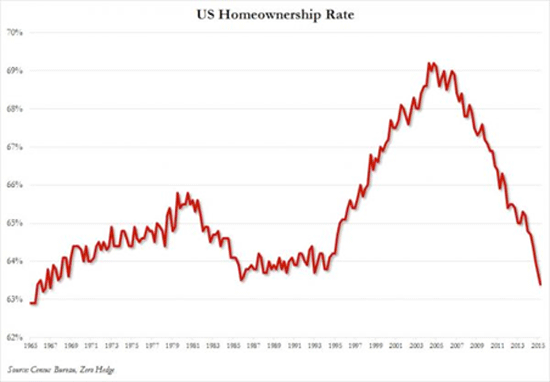Connecting the Dots: The Poisonous Cocktail of Main Street Woes and Federal Reserve Liftoff
- Shannon Staton
- |
- November 17, 2015
- |
- Comments
Wall Street was impressed with the October jobs report that showed the creation of 271,000 new jobs and a decrease in the unemployment rate to 5.0%.
It is widely believed that those strong jobs numbers paved the way for the Federal Reserve to raise interest rates in December. In fact, the likelihood of a December rate increase jumped from 58% to 70% based on federal-funds futures trading data.
The business of will-they-or-won’t-they predictions is a fool’s game, but “liftoff” is coming—whether in December or sometime in 2016. Wall Street has good reason to pay so much attention to the Federal Reserve: all of the last seven bear markets we’ve seen have been fueled, if not started, by the actions of the Fed.
A common denominator of the last seven bear markets was a sea change in monetary policy in the form of either (a) increasing interest rates or (b) the withdrawal of monetary stimulus.
Today is very different—and more dangerous—because the stock market must deal with the double-whammy of higher interest rates and the removal of quantitative easing.
NOTE: I welcome your comments—GOOD and BAD—and encourage you to post those comments on the message forum at the bottom of every issue.
At the same time, the signs of economic stress are piling up higher than a hippie in a hot-air balloon.
Stressed Out #1: Treating 401(k)s Like an ATM Machine.
Withdrawing money from your 401(k) before age 59 1/2 is one of the worst moves you can make. Not only do early withdrawals cost you a 10% penalty as well as additional income tax, they also put a giant dent in your retirement savings. That didn’t stop 30 million Americans from tapping their 401(k) in the last year.
Moreover, according to the Employee Benefit Research Institute (EBRI), another 21% of 401(k) savers have borrowed against their account with an average unpaid balance of $7,153.
Stressed Out #2: Hi Mom, I’m Home!
This may hit too close to home for many people reading this column, but an astounding number of young, working-age adults are living in their parents’ basements.
Of women age 18-34, a shocking 36.4% are living with their parents, the highest percentage since record keeping began more than seven decades ago.
The percentage of young men is even higher, a mind-boggling 42.8%!
Why?
If you believe the jobs numbers and the White House’s self-applauding rhetoric, it certainly can’t be because of the lack of jobs, with a 5% unemployment rate.
And it certainly can’t be because of interest rates as the rate on a 30-year conventional mortgage is below 4%.
As always, there’s more than one answer, but the growing number of basement dwellers is likely a combination of delayed age of marriage, burdensome student loans, stagnant wages, and the reality that most of the jobs our country is creating are low-paying service jobs.
“Would you like some fries with that, sir?”
Stressed Out #3: Death of the American Dream.
Despite super-low mortgage rates, the homeownership rate has dropped to the lowest number in 30 years.
Those low-paying service jobs make it difficult to qualify under the stricter post-Financial Crisis rules. In fact, more than 82% of Americans don’t qualify for a conventional, 20% down mortgage today.
Stressed Out #4: Foreclosures Are Going Through the Roof.
In the month of October, RealtyTrac reported that home foreclosure notifications spiked by 12% and bank repossessions—the final stage of foreclosure—surged 31%.
All told, more than six million homes have been foreclosed on since the start of the 2008 Financial Crisis.
Stressed Out #5: Shopaholics Slow Down.
Our consumer-driven economy is not getting any help from suddenly sober shopaholics. In the most recent report, the Commerce Department reported that retail sales rose by a measly 0.1% in September.
And it didn’t matter where you wear Gucci loafers or Red Wing work boots.
- Macy’s saw a 5.2% year-over-year decline in quarterly sales to $5.874 billion, and its earnings dropped from $0.61 to $0.56 per share.
- Macy’s stores are awash in unsold merchandise, witnessed by a 4.6% increase in inventory in the month of October.
- To combat sluggish sales, Macy’s promised to offer aggressive discounts during the holiday selling season.
- Business is so good at Macy’s (sarcasm) that it is closing up to 40 stores.
Walmart, the biggest retailer in the world, predicted that its profits will shrink by 6% to 12% in 2016.
Sure, the stock market had a great October with the Dow Jones Industrial Average jumping by 8.5%, but the disconnect between Wall Street and Main Street is too stark to ignore, and the Federal Reserve is about to pop the easy-money financial bubble.
To learn how to profit in and from tough times—try my monthly newsletter Rational Bear risk-free for 90 days.

Tony Sagami
30-year market expert Tony Sagami leads the Yield Shark and Rational Bear advisories at Mauldin Economics. To learn more about Yield Shark and how it helps you maximize dividend income, click here. To learn more about Rational Bear and how you can use it to benefit from falling stocks and sectors, click here.






